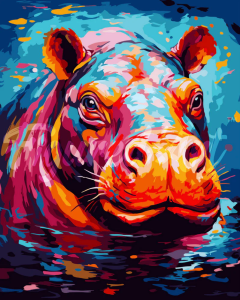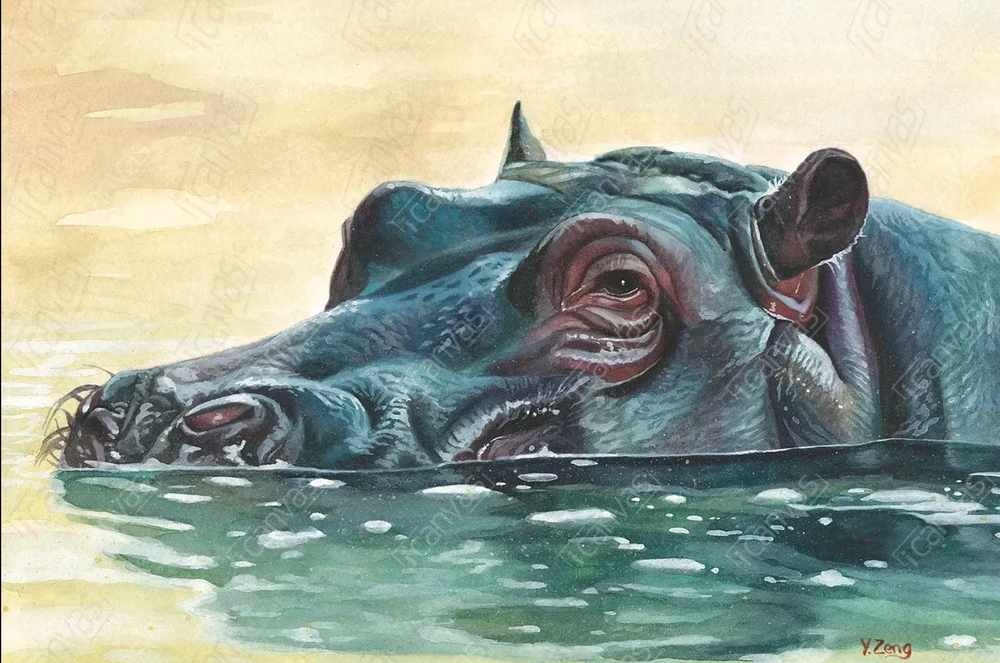The moment I first laid eyes on the soapstone carving, I felt an inexplicable pull. It was as if the stone held a secret meant only for me. It was a small sculpture, no more than a foot tall, depicting a hippo in repose. Its smooth, rounded form exuded a serene strength, a quiet majesty that seemed almost at odds with its humble size. I stood in the middle of the bustling market, the sounds of haggling and laughter fading into the background as I focused on this single piece of art.
Growing up, I had always admired art from afar. Paintings, sculptures, and photographs captured my imagination, but I never considered myself an art collector. I believed that collecting art required a level of sophistication and knowledge that I just didn’t possess. Yet, here I was, inexplicably drawn to a soapstone hippo in a crowded market in southwestern Kenya.
Stories Art Can Tell
The vendor, a middle-aged man with kind eyes and a warm smile, noticed my interest. He approached me with the ease of someone who had spent a lifetime sharing stories about his wares.
“Ah, you’ve got a good eye,” he said, his voice rich with a melodic accent. “This piece is special. It’s crafted from soapstone, a stone native to our land. And it carries the spirit of the river.”
I was intrigued. “The spirit of the river?”
He nodded. “Yes. The hippo is a symbol of protection and strength in our culture. It lives in the water, a guardian of its domain,” he explained. “This piece was carved by a local artist who spent weeks perfecting its form, infusing it with the connection of land and water.”
I ran my fingers over the smooth surface of the hippo, feeling the coolness of the stone and the subtle imperfections that marked it as a work of human hands. The idea of owning something so deeply connected to another culture, crafted with such care and intention, resonated on a profound level.
The sculpture, crafted with meticulous attention to detail, echoed the legacy of Elkana Ong’esa, the master sculptor from Kisii. Elkana’s life’s work in soapstone has transcended geographic and cultural boundaries.
The Craft of Connection
Much like the hippo that drew me in with its serene strength and quiet majesty, Elkana Ong’esa’s sculptures carry within them the spirit of the Kisii region. Each piece, whether gracing international halls or local galleries, is imbued with the narrative of Kisii’s soapstone, rich in history and deep in cultural significance. Ong’esa, like the artisan of my hippo, channels the essence of his surroundings into his work, crafting not just objects, but stories in stone.
Artistic Legacy of Kisii

Abstract hippo painting by Arisa T.
Elkana’s journey with soapstone is a testament to the transformative power of art. From his hands have emerged not only sculptures but also a renewal of interest in the cultural crafts of Kisii. His commitment to art sparked a resurgence, much like how my single purchase of the hippo ignited a personal passion for collecting and appreciating art. Both experiences highlight the profound impact of art, one on the individual, and the other, on the community.
Mentorship in Motion
The founding of the Elkana Ong’esa Museum in Kisii mirrors my newfound dedication to understanding and promoting art. Just as the museum serves as a beacon for aspiring artists, educating them on the nuances of carving soapstone—a craft refined through generations and across civilizations—my small hippo sculpture serves as a daily reminder of the global community of artists. It inspires conversations about art and culture with every one of my guests.
Shared Inspirations
Elkana Ong’esa’s work, particularly in his international commissions and local mentorship, exemplifies the role of art as a global connector. My simple act of purchasing a hippo sculpture became part of this larger narrative, where each piece of art, no matter how small, contributes to the continuity of cultural craftsmanship. The dialogue between my experience at the market and Elkana’s artistic journey emphasizes how art transcends personal acquisition and becomes a shared cultural heritage.
Continuity in Creation
Both the hippo and Elkana Ong’esa’s sculptures tell a story of cultural endurance and artistic integrity. They invite us to delve deeper into the art forms that define and unite different cultures. They challenge us to see beyond the surface, to understand the layers of history and human effort that shape every carved figure.
The journey of a single hippo sculpture in a market intertwines with the legacy of a renowned sculptor, illustrating how each piece of art—regardless of size or fame—carries a universal message of resilience, beauty, and interconnection.
Copyright ©2024 by David Waweru. Featured Image: Hippo canvas print by Yue Z.





